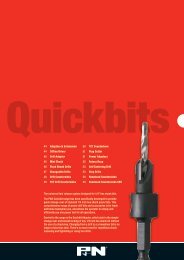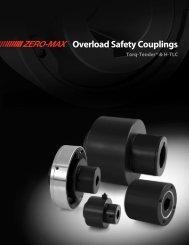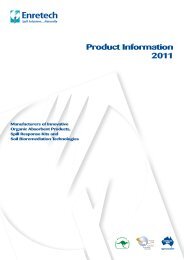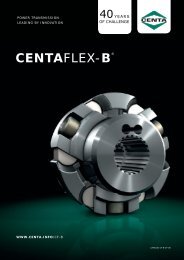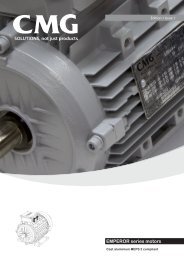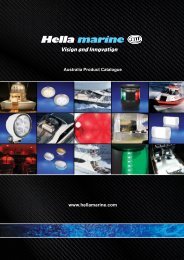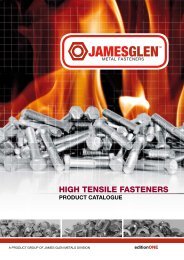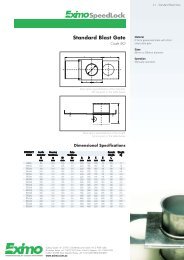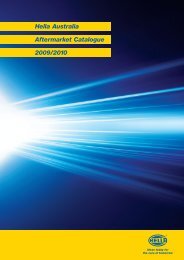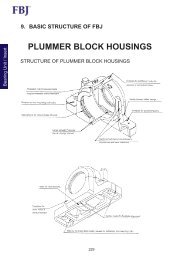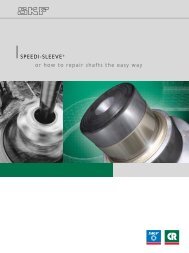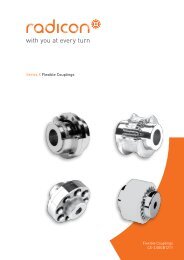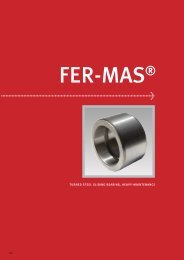Download - Industrial and Bearing Supplies
Download - Industrial and Bearing Supplies
Download - Industrial and Bearing Supplies
Create successful ePaper yourself
Turn your PDF publications into a flip-book with our unique Google optimized e-Paper software.
128 General Information<br />
TECHNICAL<br />
Luminous Efficacy<br />
Unit of measurement: lumen per watt<br />
[lm/W]: Luminous efficacy indicates<br />
the efficiency with which the electrical<br />
power consumed is converted into<br />
light.<br />
The maximum that can be achieved<br />
in theory, with all the energy being<br />
converted into visible light, is 683<br />
lm/W. In reality, the figures are much<br />
lower, between 10 <strong>and</strong> 150 lm/W.<br />
Luminous efficacies of<br />
various light sources<br />
1000<br />
100<br />
10<br />
683 lm/W = Theoretical limit for<br />
monochrome green light (555nm)<br />
199lm/W = Theoretical limit for<br />
"white" light (380–780nm)<br />
Low Pressure Sodium Lamps<br />
High Pressure Sodium Lamps<br />
Fluorescent, Metal Halide, Yellow Compact,<br />
Xenarc Lamps<br />
High Pressure Mercury Vapour Lamps<br />
High Intensity white LED<br />
Special Light Bulbs Xenon Lamps,<br />
Mercury Tungsten Blended Lamps<br />
Tungsten-Halogen Lamps<br />
General Lighting Service Lamps<br />
Colour Rendering<br />
Depending on the location <strong>and</strong> the<br />
purpose, artificial light should enable<br />
colours to be perceived correctly, as<br />
though being seen by natural daylight.<br />
Such assessments are based on the<br />
colour rendering properties of a light<br />
source, which are expressed in terms<br />
of categories of the general colour<br />
rendering index, R a. The colour<br />
rendering index is a measure of the<br />
correspondence between the colour<br />
of an object under the light source<br />
being measured <strong>and</strong> its colour under a<br />
reference light source.<br />
Carbon Thread Inc<strong>and</strong>escent Lamps<br />
1<br />
Glow Lamps, Electroluminiscent Plate<br />
Paraffin Lamp<br />
lm/W<br />
0.1<br />
C<strong>and</strong>le<br />
Inc<strong>and</strong>escent <strong>and</strong> Halogen<br />
Lamp Operation<br />
Inc<strong>and</strong>escent lamps are classic thermal<br />
radiators in which electricity flows through<br />
a Tungsten wire in an enclosed glass bulb<br />
filled with a vacuum or inert gas, heating<br />
it to approximately 2600˚C to 3000˚C <strong>and</strong><br />
making it glow. Most of the radiation emitted<br />
is at the infra-red end of the spectrum.<br />
L e λ ref<br />
Luminous efficacies of various light sources<br />
4<br />
3<br />
2<br />
1<br />
UV - radiation<br />
IR radiation<br />
Tw 2800˚C<br />
Tw 2600˚C<br />
Tungsten filament winding<br />
temperatures T w<br />
for inc<strong>and</strong>escent lamps<br />
2400˚C corresponds to a<br />
15W lamp (vacuum bulb)<br />
2600˚C corresponds to a<br />
40W lamp (bulb filled with gas)<br />
2800˚C corresponds to a<br />
500W lamp (bulb filled with gas)<br />
Tw 2400˚C<br />
0<br />
1000<br />
2000 3000 4000<br />
5000<br />
visible light<br />
wave length unit of measure nm<br />
Relative Spectral Power Distribution Of Inc<strong>and</strong>escent Lamps<br />
The main properties of an inc<strong>and</strong>escent lamp, namely its luminous efficacy <strong>and</strong><br />
life, are influenced largely by the filament temperature.



